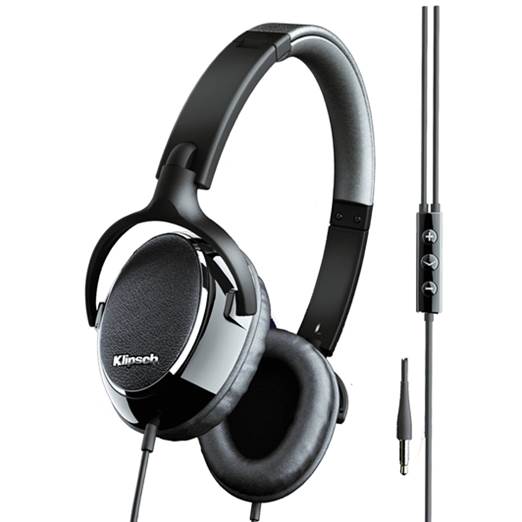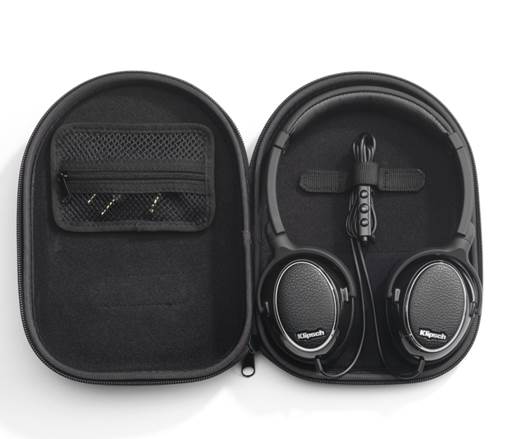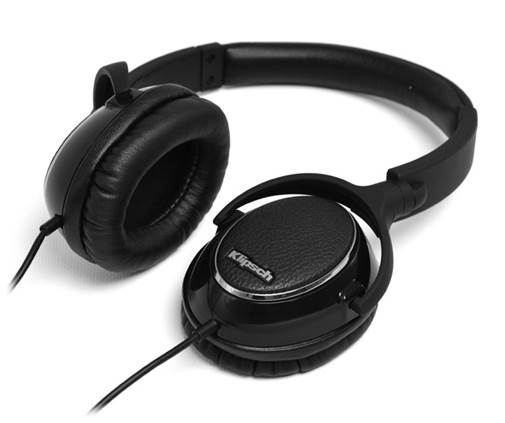Klipsch image one: $195
Designed for life on the move, the sleek
Klipsch faces a tougher challenge at home…
Details
·
Origin: USA/China
·
Type: closed-back
·
Weight: 138.3g
·
Features: 40mm KG150 transducers
·
Folding design
·
iPod remote control
·
Distributor: Klipsch UK
There’s a trend for famous speaker
manufacturers to produce their own headphones right now, and along with Focal,
Klipsch is a perfect example of this. The new Image One is the smallest design
here (although it must be said that the Sennheiser and Grado are not
significantly larger) and is also equipped to fold away into a neat and rather
useful carrying case. There are a number of other nods to portable use as well.
The cord is a flat ribbon rather than a circular type and this helps prevent
tangling when folding away. The Klipsch is also the only model here with an
inline remote for controlling your iPhone or iPad which will be seen as the
mark of Satan to hi-fi purists here!
Build is a little inconsistent. The
headband feels impressively solid and the brushed steel effect on the rear of
the earpads is very attractive. The hinges at the earpad feel less substantial
though, as they have a very wide axis of movement but don’t feel hugely secure
while they do so. The earpads are also slightly unpleasant as well, but do
prove pretty comfortable in use. A bit of a mixed bag then, but you can’t deny
that they’re basically a very handsome looking design, which counts a lot at
this price, regrettably enough…

The
new Image One is the smallest design here
Sound quality
The Image One is reasonably sensitive, but
for a headphone that is designed to be used with portable devices it required
more power to hit the test level than you might expect. Once there, it did show
some likeable features.
This is a lively and energetic sounding
headphone that has some real attack with more up-tempo music. Both the Kings of
Lean and Hybrid are propelled along with a head nodding sense of drive and
purpose and the Klipsch will generally find any rhythm and latch onto it with
some enthusiasm.
Unfortunately the tonal balance is heavily
biased in favor of the low end and the more considered and relaxed pieces in
the test that required more detail and top-to-bottom cohesion were less well
served. It also suffers from a recessed midrange, which means that voices and
instruments tend to be lost against the bass output. Treble levels are somewhat
more convincing, but still lose out to the bass output.

Klipsch
will generally find any rhythm and latch onto it with some enthusiasm
This has an obvious effect on the overall
tonality and realism that the Klipsch is capable of generating. Voices are
handled with reasonable accuracy, but the entirely instrumental Vital Space
sounded somewhat thin and artificial, and it was harder to perceive individual
instruments with the Image One than with the other designs here. It gives some
sense of the placement of musicians, but the presentation is strictly
left/right and never seems to achieve the scale of the similarly sized
Sennheiser.
Used on the move the boost to the top and
bottom of the frequency range becomes less noticeable and more effective at
keeping the outside world at bay. But at home the uneven balance becomes more
noticeable again, and far from ideal.
The Image One is well designed for use on
the move and is supplied with some very useful accessories to make it effective
in this role, and build quality is decent too. But for home use it is flawed,
with a total imbalance that’s too problematic to unconditionally recommend.
On test
The most sensitive headphone here, the
Image One needs little signal voltage to generate high levels of sound. It also
displayed the tightest capsule matching of the group at  3.7dB, 40Hz to 10kHz – an excellent result for a headphone and the
best bass extension, the response falling to -6dB ref 200Hz at something below.
Impedance variation of 33.7 ohms minimum to 40.6 ohms maximum, 20Hz-20kHz, is
also small enough to result in a below group average response error of 0.34dB
for a source impedance of 10 ohms. At just 180g, the Image One is also one of
the lightest models in the group. Less encouraging is the diffuse-field
corrected frequency response which shows a rising trend below 1kHz to a plateau
of about +13dB below 100Hz and a shortfall in presence band output, suggesting
that this Klipsch will sound very bass heavy and lacking in zip.
3.7dB, 40Hz to 10kHz – an excellent result for a headphone and the
best bass extension, the response falling to -6dB ref 200Hz at something below.
Impedance variation of 33.7 ohms minimum to 40.6 ohms maximum, 20Hz-20kHz, is
also small enough to result in a below group average response error of 0.34dB
for a source impedance of 10 ohms. At just 180g, the Image One is also one of
the lightest models in the group. Less encouraging is the diffuse-field
corrected frequency response which shows a rising trend below 1kHz to a plateau
of about +13dB below 100Hz and a shortfall in presence band output, suggesting
that this Klipsch will sound very bass heavy and lacking in zip.

At
just 180g, the Image One is also one of the lightest models in the group
|
Results at a
glance
§ Sensitivity:
+30%
§ Impedance
variation: +14%
§ Capsule
matching: +20%
§ LF
extension: +25%
§ Weight:
-18%
Our verdict
§ Sound
quality: 3/5
§ Value
money: 4/5
§ Build
quality: 4/5
§ Sensitivity:
4/5
§ Like:
Nice portable design; good sense of pace and timing
§ Dislike:
Uneven tonal balance and limited soundstage
§ We
say: A clever package, but it trades absolute sonic ability for portable
effectiveness
§ Overall:
3/5
|